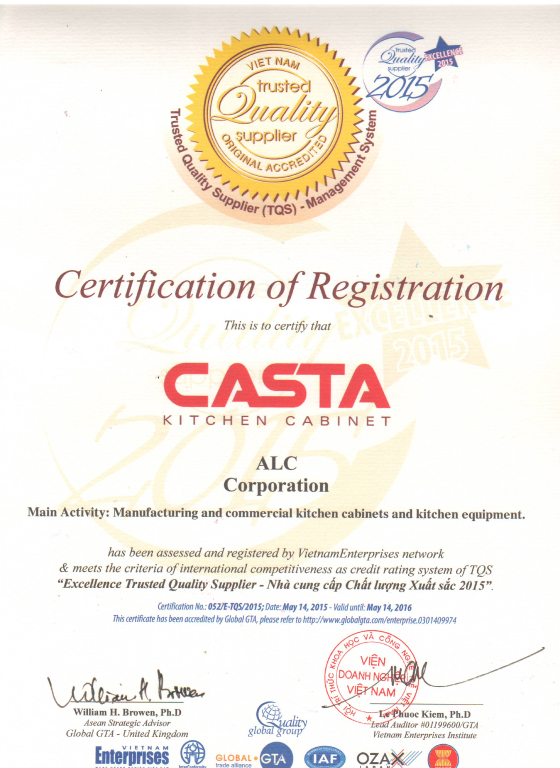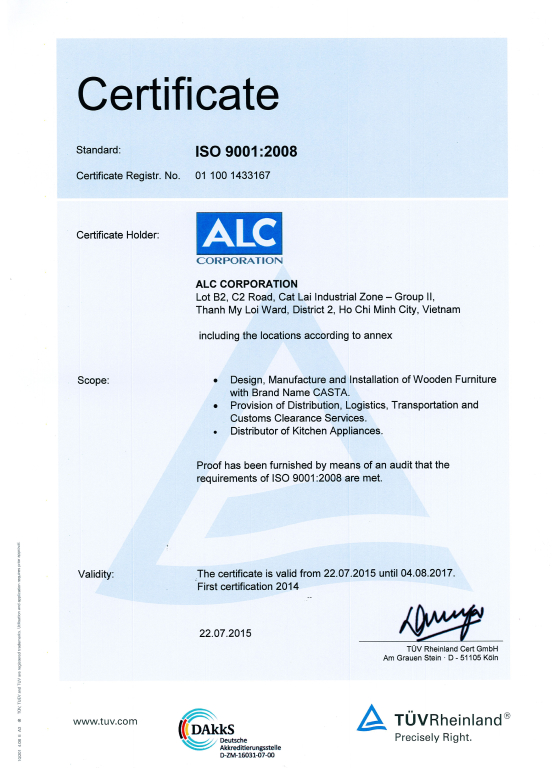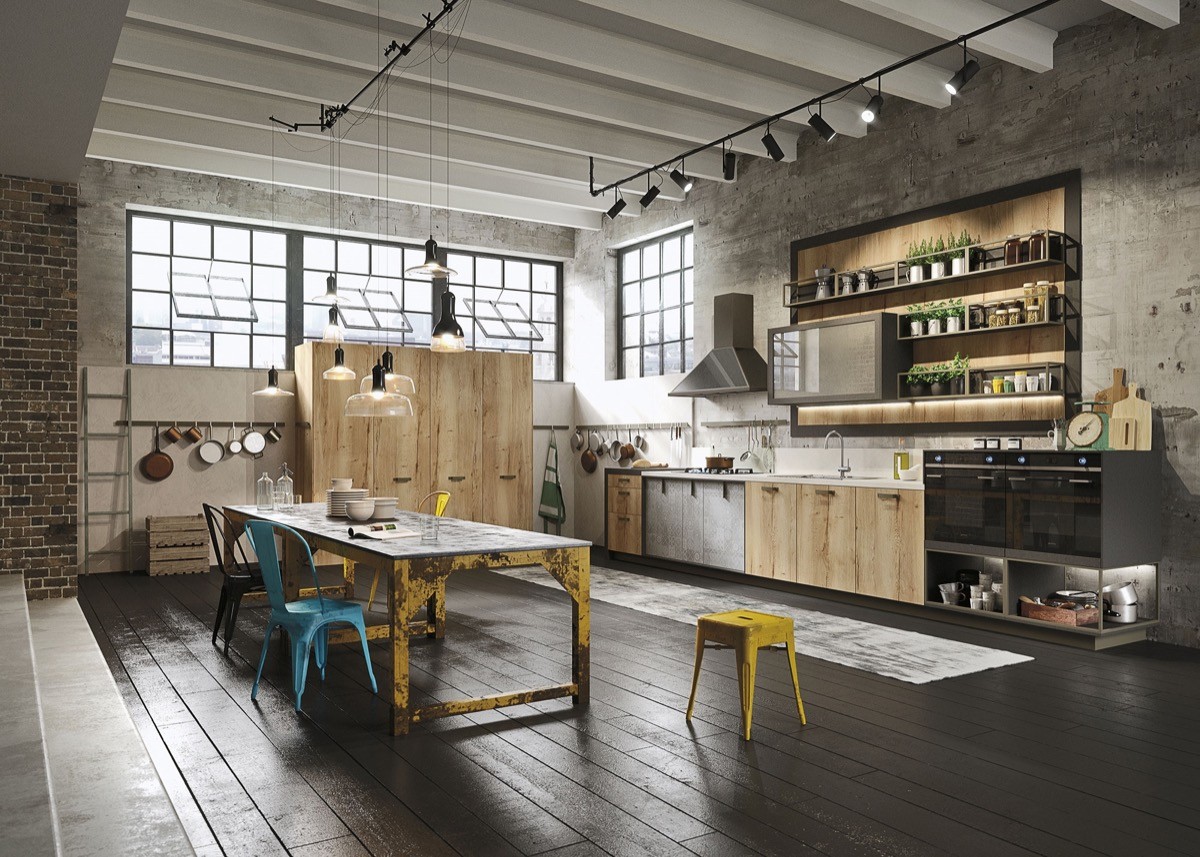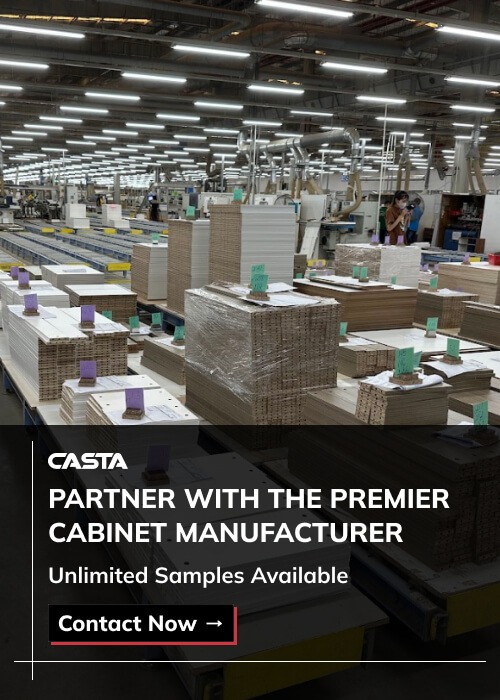Industrial wood cabinets are rapidly emerging as a favorite solution in both residential and commercial settings. Whether you are outfitting offices, storage rooms, kitchens, or retail spaces, industrial wooden cabinets offer an attractive blend of durability, affordability, and a distinctive industrial aesthetic. This trend is driven by the need for robust, cost-effective, and visually appealing storage solutions that can stand up to the rigors of high-traffic environments.
As the custom cabinet industry continues to evolve, contractors and cabinet brands are increasingly turning to industrial wood cabinets for large-scale projects. In today’s market, these cabinets are prized for their superior construction, versatile design options, and competitive price points. In this blog, we’ll explore the composition, benefits, and limitations of industrial wood cabinets, as well as provide practical comparisons with other materials and offer supplier tips that align with the latest cabinet market trends.
Table of Contents
1. What Is an Industrial Wood Cabinet? Composition, Purpose & Design
Industrial wood cabinets have rapidly gained popularity for their robust construction, distinctive industrial aesthetic, and practical applications in both commercial and residential environments. These cabinets are engineered using various types of wood products and are often combined with metal hardware to create a unique blend of functionality and style.
1.1 Definition of Industrial Wood
Engineered Wood Types:
Industrial wood cabinets are typically constructed using engineered wood products such as MDF, HDF, plywood, and MFC (Melamine Faced Chipboard). These materials provide a uniform, smooth surface that is ideal for achieving both raw and refined finishes. Often, these cabinets are designed with metal frames or hardware, which not only enhances their strength but also contributes to the distinctive industrial look. This approach is particularly common in the design of industrial wood file cabinets and industrial wood storage cabinets.
Design Aesthetic:
The design of industrial wooden cabinets is characterized by its rugged, functional, and minimalist elements. The aesthetic often includes exposed metal fittings, clean lines, and a utilitarian appeal. This style is highly favored in modern industrial spaces, lofts, and urban settings where a blend of raw materials and sleek finishes creates a bold, contemporary look.
1.2 Top Industrial Wood Cabinet Finishes
Finish Options:
Industrial wood cabinets offer a variety of finish options that can dramatically alter their appearance and function:
- Raw or Matte Finish:
- Description: Retains the natural wood texture for a utilitarian, minimalistic look.
- Applications:
- High‑traffic commercial kitchens and workshops where surface scratches blend into the matte texture.
- Urban loft apartments seeking an understated, authentic industrial vibe.
- Retail fixtures in hardware or lifestyle stores that emphasize durability over shine.
- Stained or Distressed Finishes:
- Description: Accentuates grain and adds a time‑worn character for a reclaimed‑wood aesthetic.
- Applications:
- Rustic restaurants, craft breweries, and cafes where a vintage feel enhances ambiance.
- Pop‑up retail and boutique shelving that benefit from a handcrafted, weathered look.
- Accent walls and bar fronts in office breakrooms to create a warm, inviting atmosphere.
- Lacquered or High-Gloss Finishes:
- Description: Provides a sleek, reflective surface that contrasts with industrial hardware.
- Applications:
- Luxury loft kitchens and modern apartments where a polished finish elevates house‑style.
- Upscale office reception areas and boardrooms requiring a clean, professional appearance.
- High‑end retail showrooms and hospitality spaces where gloss enhances lighting and creates visual impact.
Surface Considerations:
For contractors and designers, selecting the right finish is crucial. The chosen finish must be durable, easy to maintain, and complementary to any metal accents incorporated into the design. This is especially important in applications like industrial wood storage cabinets and kitchen cabinetry, where the finish directly impacts both appearance and longevity.
Learn more: Material & Finish Innovations: Elevating Cabinet Design and Durability
Application Examples:
- Commercial Kitchens:
Where a raw or matte finish can create a utilitarian yet modern atmosphere.
- Urban Apartments and Offices:
Where stained or distressed finishes add character and a sense of history to the space.
- Retail and Hospitality:
Where lacquered finishes offer a sophisticated, contemporary look that enhances brand identity.
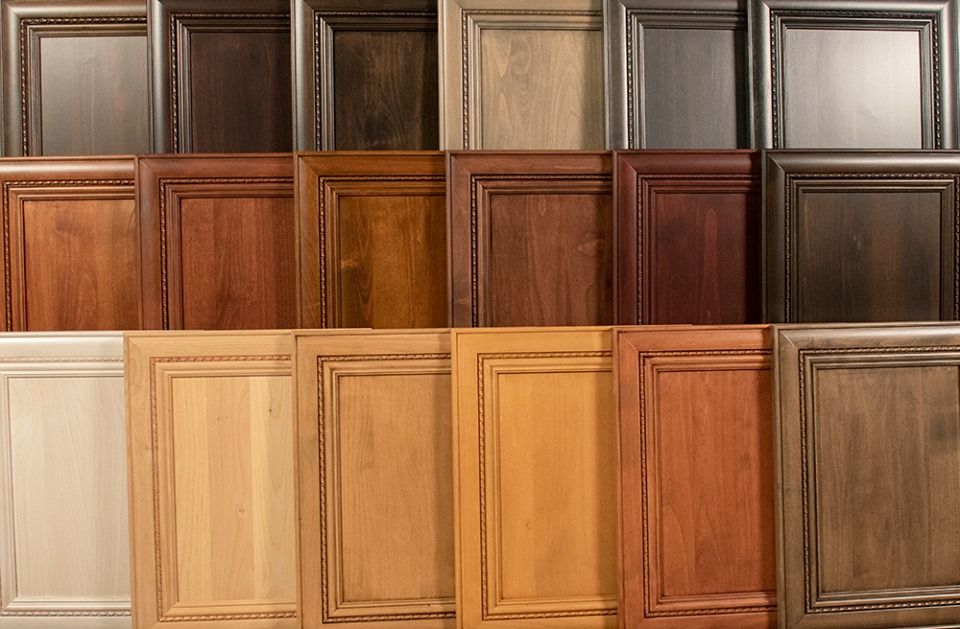
1.3 Industrial Cabinet Structure
The structure of industrial wood cabinets combines robust wood panels with modern reinforcements.
Typically, the cabinet bodies are constructed from engineered wood like MDF or plywood, finished with melamine, laminate, or veneer to provide a durable surface. Metal brackets, shelving supports, and exposed fittings are integrated into the design to reinforce structural integrity and enhance the industrial aesthetic. This combination results in cabinets that are not only visually appealing but also engineered to withstand heavy use, making them ideal for applications such as industrial wood file cabinets in offices or industrial wood storage cabinets in workshops and retail backrooms.
1.4 Common Applications
Industrial wood cabinets are versatile and can be found in a wide range of settings:
- Office Environments:
Industrial wood file cabinets are a staple in modern offices, offering durable storage solutions that combine functionality with a sleek, industrial look.
- Workshops and Retail Backrooms:
Industrial wood storage cabinets provide robust, high-capacity storage, ideal for schools, workshops, and back-of-house retail spaces.
- Kitchen and Wardrobe Cabinetry:
The industrial-modern design is increasingly popular in kitchens and wardrobes, where a combination of functional storage and a distinctive aesthetic is desired.
Learn more: The Ultimate Guide to Modern Design Kitchen Cabinets
- Commercial and Residential Projects:
From urban apartments to large commercial developments, industrial wooden cabinets offer a stylish and practical solution that meets the demands of both settings.
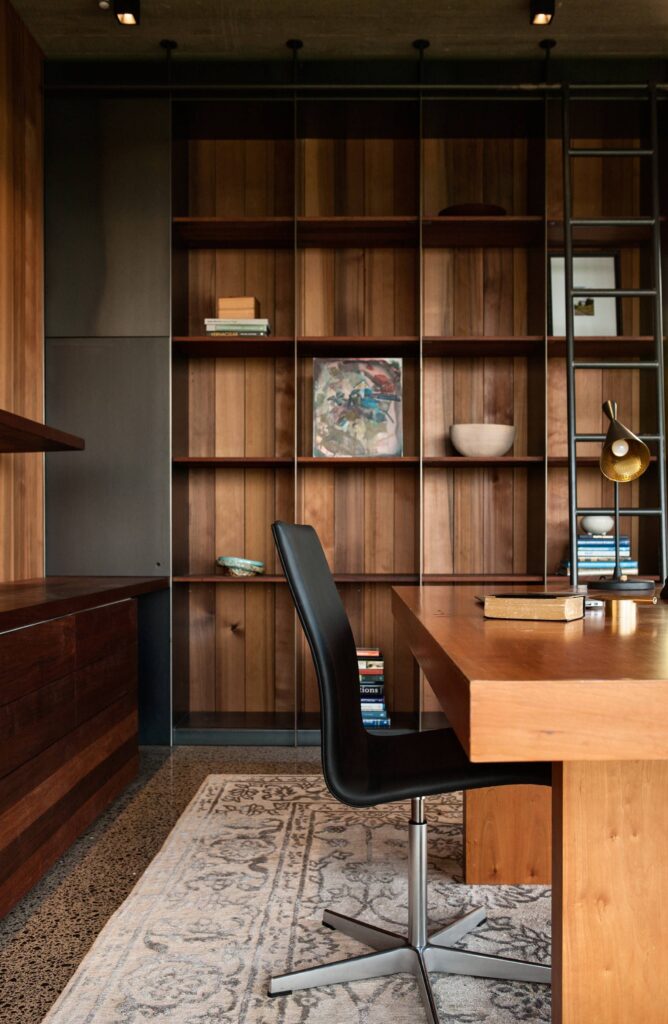
1.5 Who Should Use Industrial Wood Cabinets?
Contractors:
These cabinets are ideal for projects seeking a robust, industrial aesthetic with an emphasis on functionality and durability. Their consistent quality and modern design make them a reliable choice for large-scale commercial builds.
Commercial Developers:
For offices, workshops, and retail spaces, industrial wood cabinets offer both strength and a minimalist design, ensuring that spaces remain organized and visually cohesive.
Interior Designers and Brands:
Those looking to create unique, statement pieces that combine modern design with an industrial edge will find these cabinets particularly appealing. They are perfect for environments that demand both style and practicality.
Residential Market:
In modern homes, lofts, and urban apartments, industrial wood cabinets can provide a unique blend of rustic charm and contemporary design. Their versatility and aesthetic appeal make them a popular choice for creating warm, yet functional living spaces.
Learn more: Top rated cabinet manufacturers
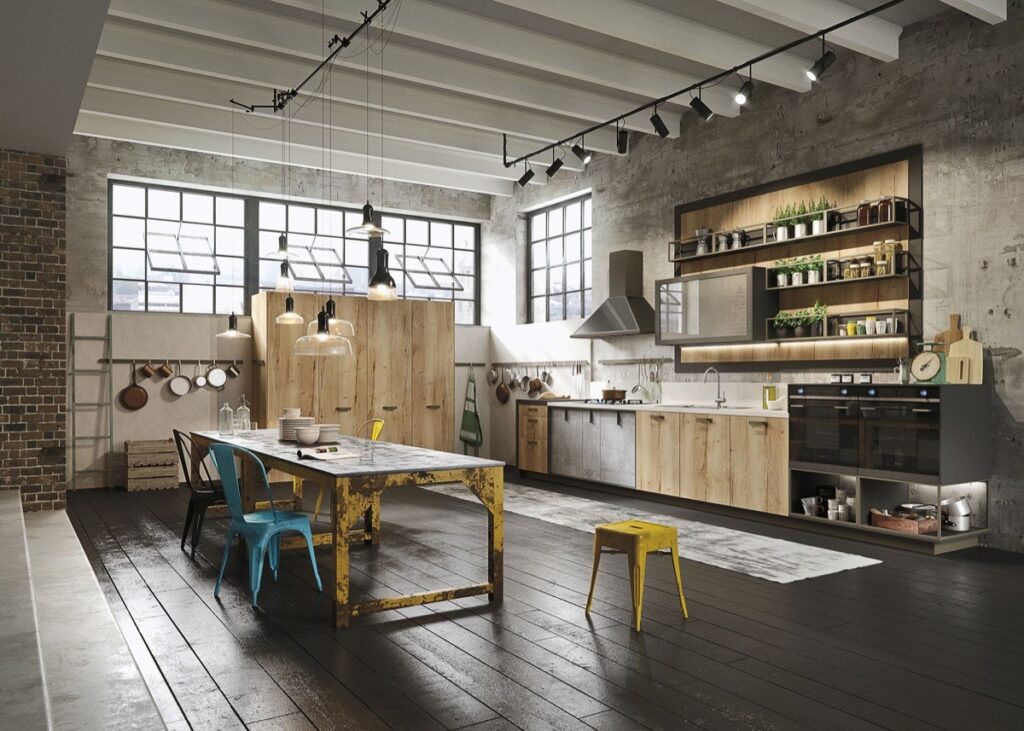
2. 5 Key Advantages of Industrial Wood Cabinets
Industrial wood cabinets offer numerous benefits that make them an appealing choice for both contractors and brands. Here are five key advantages:
2.1 Built for Durability
- Robust Construction:
Industrial wooden cabinets are constructed with reinforced frameworks using metal brackets and supports. Materials such as HDF and plywood resist impacts and everyday wear, ensuring long-lasting performance even in high-traffic environments.
Learn more: What materials of furniture are renewable and sustainable
- Longevity:
Designed to endure heavy use, these cabinets are ideal for commercial settings like offices and retail spaces where durability is critical.
2.2 Cost-Effective for Large-Scale Builds
- Lower Material Costs:
Compared to solid wood, engineered wood products such as MDF and plywood are typically 20–40% less expensive. This cost advantage makes them particularly attractive for large projects and multi-unit developments.
- Efficient Production:
The use of large, uniform sheets allows for streamlined production, reducing waste and overall costs.
2.3 Modern Aesthetic with Industrial Appeal
- Distinctive Look:
The combination of engineered wood and metal accents creates a rugged, industrial look that is popular in modern interiors. This style seamlessly fits into urban and contemporary design trends.
- Customizable Finishes:
Options for raw, matte, stained, or high-gloss finishes allow designers to tailor the appearance to meet specific project requirements and evolving cabinet market trends.
2.4 Scalable for Mass Production
- High Production Efficiency:
Advanced manufacturing techniques, including CNC cutting and automated assembly, ensure consistent quality and high scalability. This makes industrial wood cabinets ideal for commercial rollouts in offices, hotels, and housing developments.
- Consistent Quality:
Automated processes result in uniformity across large orders, which is critical for projects that require consistent aesthetics and performance.
2.5 Customizable & Flexible
- Tailor-Made Solutions:
The ability to cut, shape, and finish engineered wood with precision allows for a high degree of customization. Contractors can offer unique, branded solutions that meet specific dimensions and design preferences.
- Adaptability:
Custom sizing, color options, and configurations provide the flexibility to address a wide range of applications—from industrial wood file cabinets used in offices to industrial wood storage cabinets for workshops.
Learn more: Ideal Custom Cabinets
3. Limitations of Industrial Wood Cabinets (And How to Solve Them)
Despite their many benefits, industrial wood cabinets come with a few limitations that need to be considered:
3.1 Not Solid Wood
- Limitation:
Cabinets made from engineered wood (MDF, MFC, etc.) generally have a shorter lifespan—around 10–15 years under heavy use—compared to solid wood cabinets, which can last 30+ years.
- Solution:
Enhance durability by incorporating high-end veneers or a thicker plywood core to extend the lifespan by an additional 5–10 years.
3.2 Moisture Sensitivity
- Limitation:
Standard engineered wood products can absorb moisture, leading to swelling and warping.
- Solution:
Use moisture-resistant boards (such as E1-grade MDF) and apply protective coatings, especially in kitchens and bathrooms, to maintain stability in humid environments.
3.3 Weight Considerations
- Limitation:
Engineered wood cabinets often weigh more than metal or honeycomb alternatives, increasing shipping costs and complicating onsite handling.
- Solution:
Mitigate this by factory‑modular construction—breaking cabinets into smaller, pre‑assembled segments—and specifying lighter honeycomb or particle‑board cores for non‑structural panels. Optimized packaging on wheeled carts or pallet skids streamlines transport, while mechanical aids like panel lifters and adjustable support brackets ensure safe, precise installation.
3.4 Limited Use in High-Humidity or Exterior Projects
- Limitation:
Without proper sealing, these cabinets are not recommended for outdoor use or high-moisture areas.
- Solution:
For such applications, use specially treated materials or opt for alternative solutions that are better suited to extreme conditions.
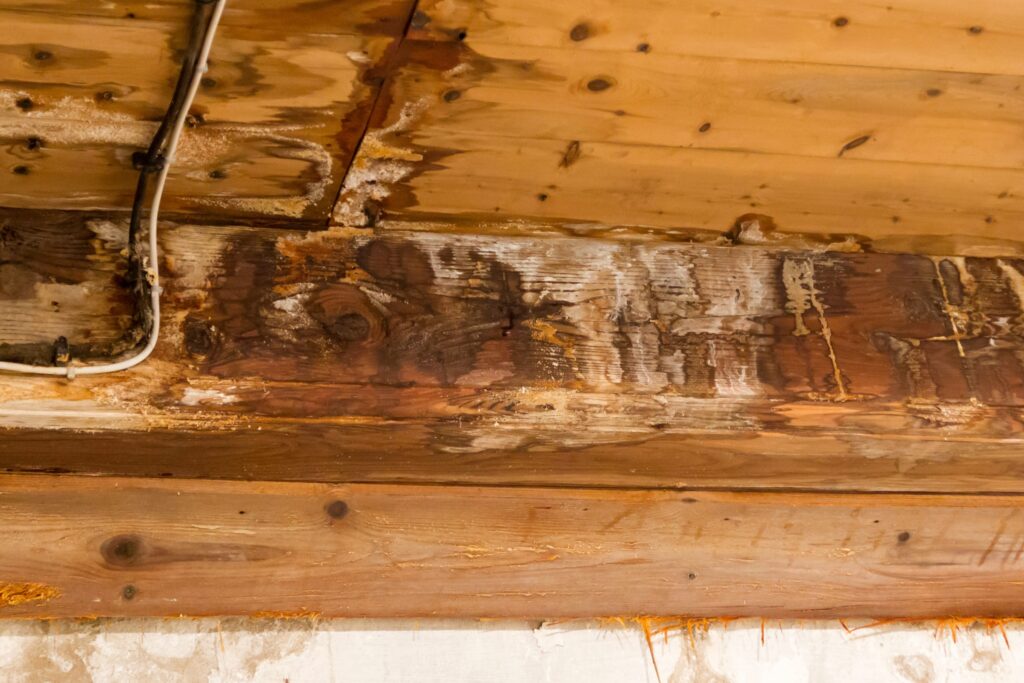
4. Cost & Material Comparison: Industrial Wood vs. Other Cabinet Options
A detailed comparison between industrial wood cabinets, metal storage cabinets, solid wood cabinets, and MDF with laminate finishes can help clarify their advantages and limitations.
| Category | Industrial Wood Cabinet | Metal Storage Cabinet | Solid Wood Cabinet | MDF with Laminate Cabinet |
| Avg. Price per Linear Foot | $120 – $200 | $200 – $300 | $250 – $400 | $100 – $160 |
| Durability | High: Reinforced with metal supports | Very High: Superior impact resistance | Very High: Natural longevity | Medium: Adequate for painted finishes |
| Finish Quality | Versatile: Raw, stained, or matte | Industrial, utilitarian | Premium: Rich, natural grain | Excellent: Smooth surface for paint |
| Customization Options | High: Easily tailored designs | Limited: Fixed, functional only | High: Customizable natural variations | Moderate: Uniform, simple profiles |
| Moisture Resistance | High: With proper coatings | High: Naturally moisture resistant | High: Naturally resilient | Medium: Improved with MR grades |
| Weight | Moderate – Heavy | Light – Moderate | Heavy | Heavy |
| Ideal Use | Offices, modern interiors, storage | Warehouses, workshops | Luxury residential, custom homes | Budget kitchens, student housing |
| Estimated Lifespan | 20 – 25 years | 25 – 30 years | 30 – 40 years | 10 – 15 years |
| Lifecycle ROI | Excellent: Low maintenance, strong resale | Strong: Durable, minimal refurbishing | Good: High initial cost, long life | Moderate: Low cost, shorter lifespan |
5. Certifications & Sustainability in Industrial Wood Cabinets
Certifications play a critical role in ensuring that industrial wood cabinets meet rigorous health, safety, and environmental standards. They not only verify the quality of the materials but also reinforce the sustainable practices that are becoming a cornerstone of modern cabinet market trends.
5.1 Why Certifications Matter
Certifications are essential for confirming that materials used in cabinet production are free from harmful chemicals, such as excessive formaldehyde. They also ensure compliance with North American safety standards, providing peace of mind for contractors and end-users. These certifications enhance product reliability and align with increasing market demand for sustainable solutions.
5.2 Key Certifications
Sets strict limits on formaldehyde emissions, ensuring low VOC levels. This certification is crucial for maintaining indoor air quality and meeting US environmental regulations.
Verifies that wood is sourced from responsibly managed forests, promoting sustainability and reducing deforestation.
A European benchmark for low-emission materials, ensuring that engineered wood products meet stringent environmental standards.
5.3 How Certifications Impact Product Quality
Certified products exhibit superior material integrity and consistency in manufacturing. They meet or exceed international quality benchmarks, which is vital for maintaining durability and long-term performance. These standards also differentiate products in a competitive market, enhancing consumer confidence and bolstering cabinet market trends.
5.4 How Casta Meets These Standards
Casta Cabinetry ensures that all panels used in production are fully certified according to CARB, FSC, and E1 standards. They work exclusively with suppliers who provide rigorously tested materials, and every batch is accompanied by full documentation. This commitment to quality and sustainability reinforces their reputation as a leader in industrial wood cabinetry, setting the benchmark for industry best practices.
Learn more: Cabinet Certification
6. Why Industrial Wood Cabinets Work for Contractors & Brands
Industrial wood cabinets offer distinct advantages that make them an ideal choice for a wide range of applications, particularly for contractors and cabinet brands looking to capitalize on current cabinet market trends.
6.1 Scalability for Bulk Projects
- Large-Scale Production:
Engineered wood panels are available in large sheets, making them ideal for mass production. This scalability is crucial for multi-unit residential developments, retail chains, and commercial projects.
- Consistent Quality:
Automated production techniques ensure uniformity across bulk orders, reducing the risk of defects and delays. This consistency is essential for maintaining reliable project timelines and meeting industry standards.
- Business Impact:
OEM‑ready workflows support private‑label rollouts, letting brands launch branded collections quickly and at scale.
6.2 Predictable Supply & Lead Times
- Reliable Sourcing:
With established supply chains and favorable trade policies, industrial wood cabinets are produced and delivered on a predictable schedule. This reliability minimizes project delays and supports steady inventory management.
- Efficient Logistics:
Advanced logistics support and export-ready packaging ensure that cabinets are shipped efficiently, with typical lead times ranging from 25–40 days. These factors contribute to enhanced cabinet market trends by stabilizing supply and reducing unexpected costs.
- Business Impact:
Stable lead times help contractors meet client deadlines, reduce schedule overruns, and avoid costly project delays.
Learn more: Lead Times & Supply Chain Resilience: Navigating Potential Disruptions
6.3 Modern Style with Functionality
- Industrial Aesthetic:
The rugged, minimalist design of industrial wood cabinets perfectly complements contemporary interiors, from urban apartments to modern offices. Their blend of wood texture and metal accents creates a unique, industrial look that is both functional and visually appealing.
- Versatile Applications:
These cabinets are ideal for various settings—offices, storage spaces, kitchens, and even file storage areas—making them a versatile solution in a competitive market.
- Business Impact:
A unified product line simplifies procurement and installation, ensuring brands can address diverse client needs without multiple SKUs.
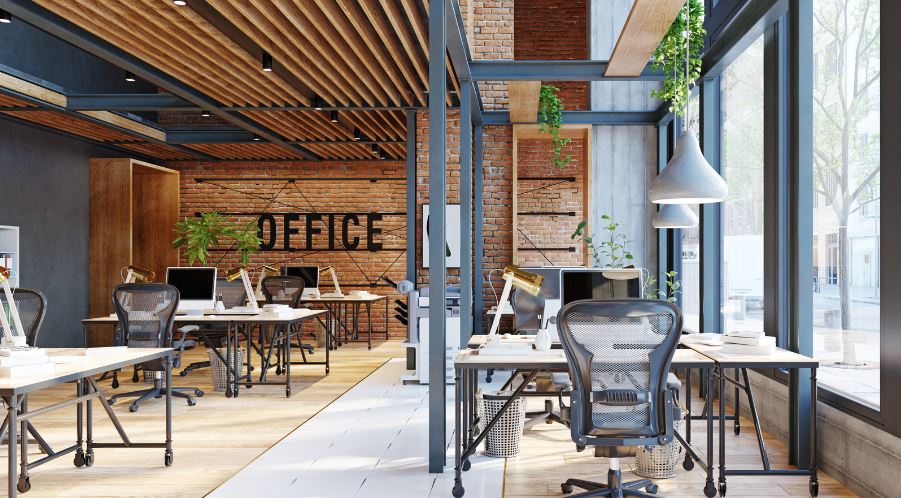
7. Casta Cabinetry: Trusted Source of Industrial Wood Cabinets
Casta Cabinetry is recognized as a leading supplier of industrial wood cabinets. Casta Cabinetry operates two state‑of‑the‑art factories—Cat Lai and Long Khánh—spanning a combined 100,000 m² and featuring 90% automated European machinery (HOMAG, Biesse, SCM). Since 2002, they’ve delivered over 20,000 custom cabinet sets per month and completed 500+ major projects, including 150,000+ apartment units and 100+ hospitality venues. With 90% of their output exported to North America under tariff‑free FTAs and 25–40 day lead times, Casta ensures rapid, reliable delivery. Their CARB, E1, JIS, FSC, and ISO 9001/14001 certifications guarantee health‑safe, sustainable products.
7.1 Manufacturing Excellence
Casta operates a state-of-the-art production facility in Vietnam, utilizing advanced European machinery (such as HOMAG, Biesse, and SCM) to produce industrial wood cabinets with unmatched precision. Their highly automated production lines ensure consistent quality and efficient manufacturing, even for large-scale orders.
7.2 Customization for International Markets
Casta provides end-to-end OEM and ODM services—beginning with a collaborative discovery phase and shopdraw creation, followed by sample approval, pre-production samples, mass production, delivery, and after-sales support in an eight‑step workflow.
Supported by a team of European experts from Italy, Germany, and Spain, two 100,000 m² factories (Cat Lai & Long Khanh) with 90% automated lines, and SAP S4HANA ERP integration, Casta can produce over 20,000 custom cabinet sets per month with tight tolerances.
Rigorous QC—including raw material inspection, in‑process checks, and finished‑product testing—alongside floor‑by‑floor labeling, flat‑pack or fully assembled packaging, and dedicated logistics planning, ensures 45–60‑day lead times and reliable, market‑ready cabinets for North American contractors and brands.
Learn more: Ideal Custom Cabinets
7.3 Certified, Health-Safe Materials
All materials used in Casta’s MDF cabinet production are backed by industry‑leading certifications, ensuring compliance with the strictest health, safety, and environmental standards. This not only reinforces end‑user confidence but also helps contractors and brands meet project documentation and regulatory requirements:
- CARB Phase 2
Ensures formaldehyde emissions are below 0.05 ppm, safeguarding indoor air quality and meeting U.S. LEED and Title VI criteria.
- E1 Emission Standard
Adheres to the European threshold of ≤0.1 ppm for formaldehyde, supporting global export requirements and low‑VOC building mandates.
- JIS (Japanese Industrial Standard)
Verifies dimensional stability and mechanical strength, demonstrating that panels can withstand the rigors of commercial and hospitality environments.
- FSC (Forest Stewardship Council)
Confirms that wood fibers originate from responsibly managed forests, bolstering green‑building certifications and eco‑branding.
- ISO 9001 Quality Management
Validates that Casta’s processes consistently produce defect‑free cabinets, reducing callback risk and reinforcing brand reliability.
- ISO 14001 Environmental Management
Demonstrates an ongoing commitment to minimizing environmental impact throughout production, enhancing project sustainability credentials.
Learn more: Casta’s ISO-Qualified Cabinet Certification: Setting the Gold Standard for Quality and Reliability
7.4 Logistics & Delivery Support
With robust export logistics, Casta ensures that industrial wood cabinets are delivered on time and in pristine condition. Their efficient packaging and reliable delivery network mean that lead times are kept between 25–40 days, even for bulk orders, providing a dependable supply chain that benefits the entire project lifecycle.
Learn more: Outstanding International Projects

8. Conclusion: Is Industrial Wood Cabinetry Right for Your Business?
Industrial wood cabinets offer a compelling mix of durability, cost efficiency, and modern design that makes them an attractive option for a wide range of applications. They are particularly well-suited for projects that demand high-quality, scalable, and customizable solutions. While engineered wood products may not match the longevity of solid wood in every instance, they provide a reliable, cost-effective alternative that aligns with current cabinet market trends.
When sourced from a trusted partner like Casta Cabinetry, industrial wood cabinets deliver consistent performance, superior finish quality, and robust sustainability credentials. For contractors, commercial developers, and cabinet brands, these cabinets represent a smart investment in a rapidly evolving market, offering significant commercial value and a competitive edge.
Embrace the evolving cabinet market trends by choosing industrial wood cabinets that balance affordability with performance. With the right partner, your projects can benefit from streamlined production, reliable supply, and innovative design solutions that are built to last.
9. FAQ
What is an industrial wood cabinet made of?
Are industrial wood cabinets durable enough for commercial use?
Can I customize the design and size of industrial wood cabinets?
What certifications should I look for when importing these cabinets?
How long does it typically take to receive a bulk order from Vietnam?
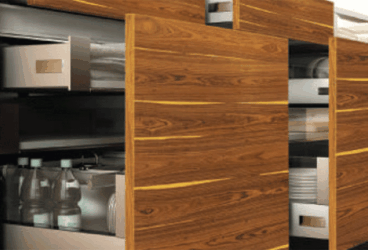
MDF vs Plywood for Kitchen Cabinets – Which is Better?...
MDF vs Plywood for kitchen cabinets is one of the most important decisions contractors and furniture brands must make wh...
11/14/2025 | David Nguyen
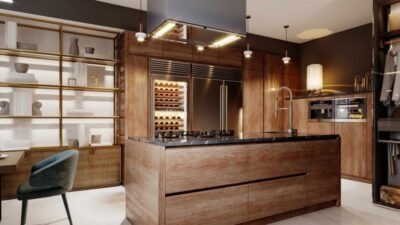
Plywood Kitchen Cabinets: Pros and Cons Explained for Contra...
Plywood kitchen cabinets are now one of the most preferred options in modern kitchen manufacturing, combining durability...
11/12/2025 | David Nguyen
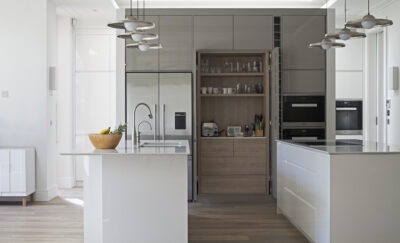
Best Italian Kitchen Cabinets: Modern Design, Precision Craf...
Italian kitchen cabinets represent the gold standard in modern kitchen design — celebrated for their craftsmanship, slee...
10/29/2025 | David Nguyen
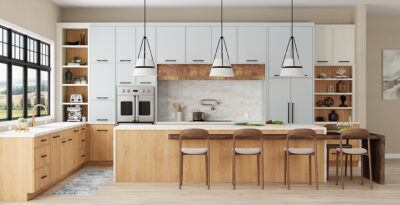
European vs American Kitchen Cabinets: Key Differences &...
European vs American kitchen cabinets is a core decision for anyone specifying cabinetry for modern buildings or homes. ...
10/27/2025 | David Nguyen
Contact us
Casta is always ready to listen and answer all customers' questions
